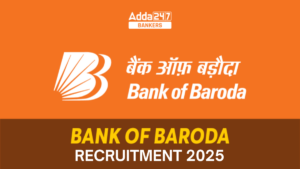Check Detailed VIDEO SOLUTION for this Quiz
Directions (1-5): Study the following information carefully and answer the questions given below:
M, N, O, P, Q, R, S and T are sitting around a square table, facing the centre, such that four sit at middle of the sides and four sit at the corners. Each of them has a different profession, viz. doctor, engineer, architect, pilot, banker, teacher, businessman and politician.
The one who is politician sits third to the right of S. O is an immediate neighbour of S. The one who is architect sits second to the right of O. N sits third to the right of T. T is neither a politician nor an architect. Only one person sits between O and the one who is a teacher. M and R are immediate neighbours of each other. Neither M nor R is a politician. The one who is a doctor sits second to the right of M. Only two people sit between P and the one who is an engineer. P is not a politician. The one who is a pilot is not an immediate neighbour of the politician. The one who is banker sits second to the left of M. The one who is Politician does not sit at the corner.
Q1. Who amongst the following is a businessman?
(a) Q
(b) P
(c) O
(d) N
(e) M
Q2. What is the position of Pilot with respect to the politician?
(a) Immediate right
(b) Third to the left
(c) Second to the right
(d) Fourth to the left
(e) Second to the left
Q3. Who sits exactly between the teacher and the engineer, when consider from left of engineer?
(a) M
(b) The one who is politician
(c) The one who is doctor
(d) The one who is Pilot
(e) The one who is Architect
Q4. Which of the following is not true with respect to the given seating arrangement?
(a) T is an immediate neighbour of engineer.
(b) P is a banker.
(c) The banker and Q are immediate neighbours of each other.
(d) The pilot sits exactly between the architect and the businessman.
(e) The Doctor sits second to the right of the businessman.
Q5. What is the profession of P?
(a) Businessman
(b) Pilot
(c) Banker
(d) Teacher
(e) Architect
Directions (6-10): Study the given information and answer the questions:
When a word and number arrangement machine is given an input line of words and numbers, it arranges them following a particular rule. The following is an illustration of input and its rearrangement.
Input: address 44 pluto 67 mars 77 hello 84
Step I: pluto address 44 67 mars hello 84 77
Step II: address pluto 44 mars hello 84 77 67
Step III: mars address pluto 44 hello 77 67 84
Step IV: hello mars address pluto 77 67 84 44
Step IV, is the last step of the above arrangement as the intended arrangement is obtained.
As per the rules followed in the given steps find out the appropriate steps for the given input.
Input: science 33 sst 19 maths 71 hindi 43 eng 63
Q6. In which of the following step the elements ‘maths eng sst 19 63’ is found in the same order?
(a) Step I
(b) Step IV
(c) Step V
(d) Step II
(e) None of these
Q7. Which of the following will be the penultimate step?
(a) Step V
(b) Step IV
(c) Step V
(d) Step III
(e) None of these
Q8. What will be addition of 3rd element from left and 2nd element from right in step I?
(a) 96
(b) 86
(c) 98
(d) 97
(e) None of these
Q9. What will be the position of ‘19’ in the last step?
(a) Third from the left
(b) Sixth from the left
(c) Sixth from the right
(d) Fifth from the left
(e) None of these
Q10. How many steps are required to arrange the given input?
(a) six
(b) seven
(c) four
(d) five
(e) None of these
Directions (11-15): In these questions, a relationship between different elements is shown in the statements. The statements are followed by two conclusions. Give answer
Q11. Statement: H<B; H≥D>E; G≥F>B
Conclusion: I. E≥B II. F≥H
(a) if either conclusion I or II is true.
(b) if only conclusion I is true.
(c) if neither conclusion I nor II is true.
(d) if only conclusion II is true.
(e) if both conclusions I and II are true.
Q12. Statement: K<J; D≤S=J; I>S; H≥J
Conclusion: I. I>H II. H≥I
(a) if both conclusion I and II are true.
(b) if neither conclusion I nor II is true.
(c) if only conclusion I is true.
(d) if either conclusion I or II is true.
(e) if only conclusion II is true.
Q13. Statement: J<L; K≥S; K≥O; S>L≥T
Conclusion: I. L>O II. O>T
(a) if only conclusion II is true.
(b) if either conclusion I or II is true.
(c) if neither conclusion I nor II is true.
(d) if only conclusion I is true.
(e) if both conclusions I and II are true.
Q14. Statement: T>N; A>S>Q; A<N
Conclusion: I.T>Q II. T>S
(a) if only conclusion II is true.
(b) if only conclusion I is true.
(c) if neither conclusion I nor II is true.
(d) if either conclusion I or II is true.
(e) if both conclusions I and II are true.
Q15. Statement: B≤C; B≤D; C=N; D<S
Conclusion: I. S≤C II. N≥S
(a) if only conclusion II is true.
(b) if either conclusion I or II is true.
(c) if neither conclusion I nor II is true.
(d) if only conclusion I is true.
(e) if both conclusions I and II are true.






 The Hindu Review October 2022: Download ...
The Hindu Review October 2022: Download ...
 Bank of Baroda SO Recruitment 2025 Notif...
Bank of Baroda SO Recruitment 2025 Notif...
 SBI PO Vacancy 2025, Check Category Wise...
SBI PO Vacancy 2025, Check Category Wise...




